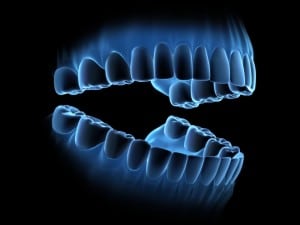 Getting excited about technology shouldn’t be restricted to the world of the newest release from Apple or an innovation in artificial intelligence. Dental technology has grown by leaps and bounds over the past couple of decades and it has resulted in professional dental care that is more accurate, more comfortable, more efficient, and better for the environment. And the best part is that innovative dental technology isn’t restricted to big cases and extensive treatment plans. Let’s take a look at two high-tech devices that take your routine dental checkup to the next level.
Getting excited about technology shouldn’t be restricted to the world of the newest release from Apple or an innovation in artificial intelligence. Dental technology has grown by leaps and bounds over the past couple of decades and it has resulted in professional dental care that is more accurate, more comfortable, more efficient, and better for the environment. And the best part is that innovative dental technology isn’t restricted to big cases and extensive treatment plans. Let’s take a look at two high-tech devices that take your routine dental checkup to the next level.
Diagnodent
This handheld device can be found in many dental offices nationwide. In the simplest terms, Diagnodent uses a laser to help detect tooth decay. When the laser is directed toward a tooth, areas of decay, even those invisible to the naked eye, fluoresce (healthy enamel will not fluoresce under laser light). The laser then sends a reading to a machine that quantifies the severity of the decay.
What it can do for you . . .
Diagnodent allows your dentist to identify tooth decay in its very earliest stages, meaning that he can provide preventive treatment (such as a fluoride treatment or sealant) or restorative treatment (a filling) before the cavity descends into the sensitive inner layers of the tooth.
Digital X-rays
Digital x-rays work the same way as traditional x-rays: an x-ray beam is shot through the body, producing an image of hard structures (like bone and teeth). Traditional x-rays were slower and required the chemical transfer of the image onto special paper. Digital x-rays produce, obviously, a digital image that is immediately uploaded to a computer, where your dentist can enhance and manipulate the image.
What it can do for you . . .
Digital x-rays have a number of benefits for the patient, including decreased exposure to radiation, easily transferrable x-ray images (a big bonus for patients with insurance), and a more accurate picture of the oral structures, which can result in more conservative treatment options.



